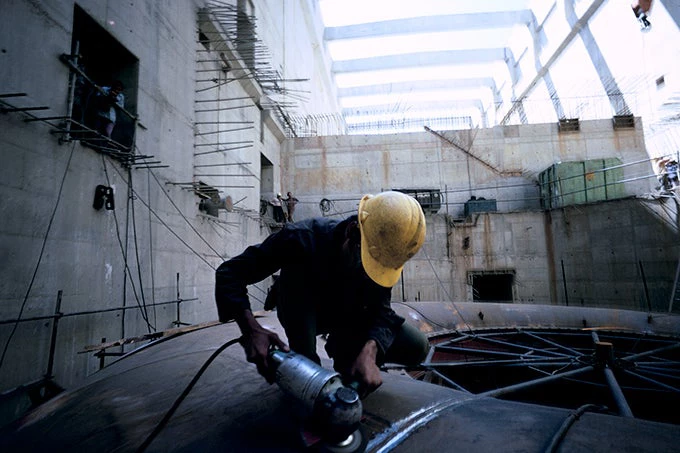
From 1990 to 2010, 91 million people In Pakistan received electricity for the first time.
And power outages across the country have gone down drastically over the past few years.
Clearly, Pakistan has achieved much progress in expanding its electricity access and production in recent decades .
However, nearly 50 million Pakistanis still lack access to grid electricity and the country ranks 115th among 137 economies for reliable power.
After peaking in 2006, per capita electricity consumption failed to grow for almost a decade, remaining only one-fifth the average for other middle-income countries in 2014.
To boost sustainable energy supply, Pakistan’s power sector needs urgent investments and reforms to target inefficiencies in the entire electricity supply chain.
Fittingly, my new report In the Dark analyzes what lies behind these inefficiencies and suggests relevant actions to improve the operation of power plants, cut down on waste and costs, and increase electricity supply in a cost-effective manner.
The study sheds new light on the overall societal costs — not merely the fiscal costs as in previous research — of subsidies, blackouts and other distortions in the power sector.
To that end, my team and I surveyed Pakistan's entire supply chain from upstream fuel supply to electricity generation, transmission and distribution, and eventually, down to consumers.
Put simply, the numbers we found are dire.
Power distortions cost Pakistan’s economy much more than previously estimated: $18 billion in fiscal year 2015—that is 6.5 percent of the country’s economy.
Problems begin upstream, where gas underpricing encourages waste and reduces incentives for gas production and exploration.
And with no recent significant gas discoveries, higher gas usage has widened the gap between growing demand and low domestic supply.
On top of that, the volume of gas lost before reaching consumers reached 14.3 percent in fiscal year 2015. By comparison, this number is about 1 to 2 percent in advanced economies.
Public power plants use 20 percent more gas per unit of electricity produced than private producers.
Poor transmission contributed to 29 percent of the electricity shortfall in fiscal year 2015, while weak infrastructure, faulty metering and theft cause the loss of almost a fifth of generated electricity.
Electricity underpricing and failure to collect electricity bills have triggered a vicious “circular debt” problem, leading to power outages.
A lack of grid electricity also leads to greater use of kerosene lamps that cause indoor air pollution and its associated respiratory infections and tuberculosis risks.
Lack of access to reliable electricity also adversely impact children’s study time at night, women’s labor force participation, and gender equality.
Connecting all of Pakistan’s population to the grid and increasing the supply of electricity to 24 hours a day would increase total household income by at least $4.5 billion a year and avoid $8.4 billion in business losses.

As such, power sector reforms should be a top priority for Pakistan can yield huge economic gains toward a more sustainable future.
Power sector reforms that restore market pricing and improve efficiency will complement traditional investments to increase power supply and expand access to reliable electricity.
However, in the absence of other reforms, too narrow a focus on liberalizing energy prices may be inadequate and, given the current inefficiencies in the sector, would lead to excessively high electricity costs, putting added stress on the poor and most vulnerable.
Rather, increasing efficiency should be the main priority, together with a gradual increase in energy prices and targeted assistance to mitigate the impact on consumers.
Addressing institutional distortions would yield huge efficiency gains. For example, allocating gas based on transparent market rules rather than administrative orders would promote a more productive use of fuel, and providing adequate incentives from adopting competition and regulations that links tariff with operating efficiency would improve the performance of utilities.
If well designed, these reforms will directly benefit all Pakistanis, especially the poorest, by increasing access, improving reliability and reducing cost emissions across Pakistan.


Join the Conversation